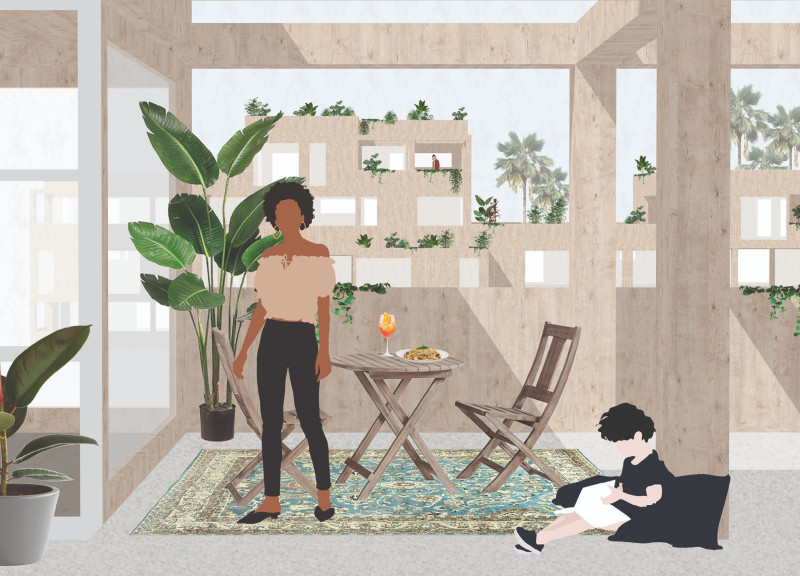5 key facts about this project
The co-living program in Rome addresses the need for affordable and adaptable housing in an urban setting. It is designed to create a community by encouraging interaction among residents while still respecting their individuality. The focus is on a balance of private and shared spaces, which reflects the realities of modern living.
Spatial Configuration
Living spaces are organized to promote social engagement while providing private areas for residents. The design makes clear separations between communal spaces and individual units. This allows residents to connect with each other without losing their personal space. The layout supports small communities, specifically those comprising 3 to 8 people, fostering relationships and shared experiences among them.
Location Significance
Two locations are chosen for the co-living spaces: the Tiber River area and Stadio Flaminio. The Tiber River presents a chance to improve an underused part of the city, connecting residents more closely to the center of Rome. Stadio Flaminio, with its historical background from the Olympic stadium, incorporates this legacy into a modern living environment. Both locations aim to enhance the social and cultural aspects of urban life.
Community Integration
The design encourages community participation by creating environments meant for interaction. Residents can choose how to shape their living experience while accessing shared facilities and support networks. The architecture is intended to promote a sense of belonging, where collective activities and shared responsibilities enrich daily life. Elements of the design are aimed at improving accessibility and quality, contributing to a sustainable community.
Maximizing User Experience
Attention is given to common areas that serve various purposes, including meeting, working, and relaxing. These spaces are functional and welcoming, suitable for both everyday tasks and informal gatherings. The design strikes a balance between public areas and private retreats. Residents have the opportunity to enjoy quiet time alone or engage with neighbors, bringing together privacy and social aspects effectively.
A series of terraces and balconies enhances the living experience by providing outdoor spaces. These areas allow residents to enjoy fresh air and interact with one another, integrating the natural environment with community life. Such thoughtful details aim to create a comfortable and livable atmosphere, promoting well-being in an urban context.



























